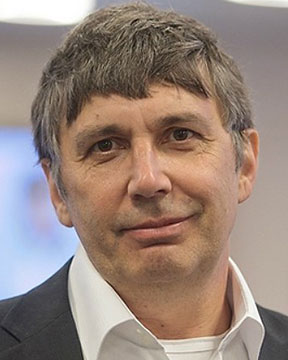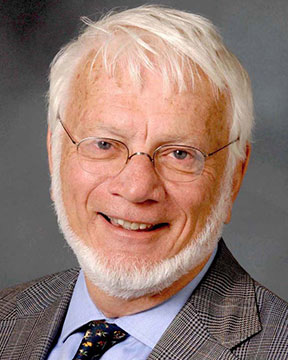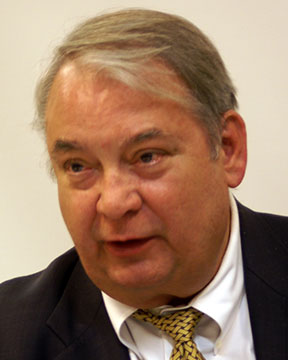ORALS
SESSION: ManufacturingTuePM3-R1
Metal Forming / Metal Removal Processing / Non-Conventional Techniques- ΙΙ | Mamalis International Symposium on Advanced Manufacturing of Advanced Materials and Structures with Sustainable Industrial Applications |
| Tue Nov, 6 2018 / Room: Mar Azul (50/1st) | |
| Session Chairs: Paata Kervalishvili; Session Monitor: TBA |
17:40: [ManufacturingTuePM313]
Improving the Efficiency of Machining Through Modifying Carbide Cutting Tips by Pulsed Magnetic Field Processing Viktor
Kovalov1 ; Yana
Vasilchenko
1 ; Maxim
Shapovalov
1 ;
1Donbas State Engineering Academy, Kramatorsk, Ukraine;
Paper Id: 419
[Abstract] This paper solves the problem of increasing the productivity of machining, as well as reducing both the cost of cutting tools and equipment downtime associated with tool failures and its replacement.
The task of increasing the strength characteristics of the hard alloy tools necessitates the development of modification methods that affect the entire volume of the material. The requirements that are put forward for these methods are low cost, environmentally friendly, and make its application in the conditions of the machine - building enterprise possible. The method of processing by a pulsed magnetic field satisfies these requirements [1-4].
It is found that the modification of hard alloy metal by pulsed magnetic field processing leads to the increase in its homogeneity, the decrease in the thickness of the crack layer, the stabilization of mechanical characteristics, and the increase in the bending strength.
Modification of carbide cutting tips by pulse magnetic field machining is carried out on the equipment, which consists of a pulse generator with a power supply and an inductor. The influence of the pulsed magnetic field on the strength and wear resistance of carbide cutting tips for improving the performance of tooling and reducing the operation and tool costs is investigated. Technological modes of pulsed magnetic field machining by combined technologies (pulsed magnetic field processing + vacuum plasma coating) of samples of tool materials and carbide cutting tips have been worked out.
The application of the method of "destructive feeding" for laboratory and production evaluation of structural strength of carbide tips is justified. The method of step-by-step increase of cutting conditions (feeding and cutting speed) allows to implement the principle of extrapolation on loads by gradually increasing loading of strength and wear rate of the tool material.
It was found that by roughing of materials with carbide cutting tips hardened by pulsed magnetic field, a multiple tool burnishing with several degrees of slowdown and acceleration of the wear process takes place. This leads to wear resistance increase of carbide cutting tips.
References:
[1] Postnikov, S.N.: Perestrojka defektnyh kompleksov v kristallicheskih tvyordyh telah pod dejstviem magnitnyh polej doporogovyh ehnergij. Prikladnye problemy prochnosti i plastichnosti. Statika i dinamika deformiruemyh system. Vsesoyuznyj mezhvuzovskij sbornik. Gor'kij, 1980, 138 p. (in Russian)
[2] Soroka, O., Rodichev, Y., Kovalov, V., Vasilchenko, Y.: Strengthening of carbide cutting tool for heavy machinery on the base of surface and bulk modification by physical methods. Vіsnik Ternopіl's'kogo Nacіonal'nogo tekhnіchnogo unіversitetu іm. І. Pulyuya. 2013, vol. 71, 3, pp. 133-145. (In Ukrainian)
[3] Y.Rodichev, O. Soroka, V. Kovalov, Y.Vasilchenko, Predicting the fatigue strength of hard alloys, treated with pulsed magnetic field. Proceeding. 13th International conference "Research and Development in Mechanical Industry". RaDMI. Vrnjacka Banja, Serbia, vol. 2, 2013, pp. 254-259. [15] Loshak, M.G. Prochnost' i dolgovechnost' tverdyh splavov. Kiev, Naukova Dumka, 1984, 328 p
[4] Bataineh, O., Klamecki, В., Koepke, B.G.: Effect of pulsed magnetic treatment on drill wear. Journal of Materials Processing Technology. 2003, vol. 134, 2, pp. 190-196.
SESSION: ManufacturingTuePM3-R1
Metal Forming / Metal Removal Processing / Non-Conventional Techniques- ΙΙ | Mamalis International Symposium on Advanced Manufacturing of Advanced Materials and Structures with Sustainable Industrial Applications |
| Tue Nov, 6 2018 / Room: Mar Azul (50/1st) | |
| Session Chairs: Paata Kervalishvili; Session Monitor: TBA |
18:05: [ManufacturingTuePM314]
Improving the Accuracy of Heavy Lathes Viktor
Kovalov1 ; Yana
Antonenko
2 ; Marina
Saenko
1 ;
1Donbas State Engineering Academy, Kramatorsk, Ukraine;
2, Kramatorsk, Ukraine;
Paper Id: 418
[Abstract] Improving the accuracy of heavy lathes is a complex and critical problem in achieving the quality of new products. At present, from the theoretical and experimental studies of numerous scientists, considerable material on technological quality assurance of processing [2] has been accumulated, which allows the creation of mathematical models for controlling the processing on machines [1-3].
Based on the calculation of limit values of distributed loads which act on the base frame support, deformation strength by method of finite elements were modeled with the tool package CosmosWorks. The simulation was performed for the cases that have the most significant effect on the size of the deformation of the carrier system [4]. To determine the optimal construction of a heavy machine lathe with a carrying capacity of 100 tons, a comparative analysis of the results of computer modeling of the welded frame and field studies of the cast frame of heavy lathes were carried out. As a result of production tests, the coincidence of the results of mathematical modeling with full-scale tests is found to be 6-25%.
The design of the frame heavy lathe high accuracy load capacity of 100 tons, with the possibility of machining up to 12.5 m and 2.5 m in diameter with maximum cutting powers of 200 kN are developed. Recommendations on designing of carrier systems of CNC heavy machine tools high accuracy are given. Deformations of the frame of support under extreme workloads are presented in a range from 29 microns to 83 microns. The results are introduced at PJSC KZTS range with the release of heavy CNC lathes of new generation. One of the most promising ways to further improve the accuracy of machine tools is to equip their with adaptive systems [5].
References:
References:
[1] Brgozovsky B.M. The accuracy and reliability of automated precision machine tools.Saratov: SGTU 1992; 124. (In Russian)
[2] Averchenkov V.I., Fedorov V.P., Heyfec M.P. Fundamentals of mathematical modelling of engineering systems. Bryansk: BGTU 2004; 271. (In Russian)
[3] Jung J.H., Choi J.P., Lee S.J. Machining accuracy enhancement by compensating for volumetric errors of a machine tool and on-machine measurement. Journal of Materials Processing Technology 2006, 174 (1-3); 56-66.
[4] Kovalev V., Vasilchenko Y., Gakov S., Kurilenko Y. Trends of adaptive control of accuracy of the technological system on the basis of heavy machine-tools, 2. International Conference "ICQME 2007", Budva, Montenegro, 2007, pp. 263-275.
[5] Kovalev, V.D.; Vasilchenko, Y.V. and DašiA�, P.: Adaptive optimal control of a heavy lathe operation. Journal of Mechanics Engineering and Automation (JMEA), Vol. 4, Issue 4 (April 2014), pp. 269-275.
19:30 PM Dinner



















